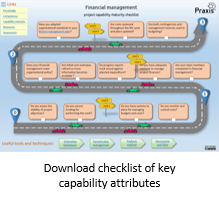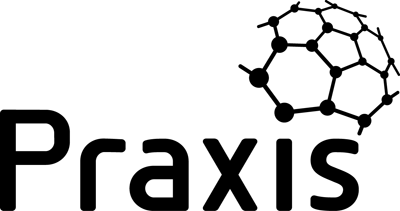- estimate the cost of achieving the objectives;
- assess the viability of achieving the objectives;
- secure funds and manage their release throughout the life cycle;
- set up and run financial systems;
- monitor and control expenditure.
| Indicators | Level 2 attributes |
This financial management capability summarises the capabilities for the functions that make up financial management. This summary capability will typically be more relevant for projects that are entirely funded from a single source and use existing financial control systems. The more detailed subsidiary capabilities should be used where:
|
| Estimate costs | Top down estimates are performed early in the life cycle and refined bottom up as specifications become available. | |
| Investment appraisal | Simple appraisal techniques are documented in the business case. | |
| Secure funding | Routine sources of funding are confirmed. | |
| Develop budget | An overall budget for the work is documented and progress reports track against this budget. | |
| Financial control | Actual costs are accurate and used to track against budget. | |
| Indicators | Level 3 attributes | |
| Estimate costs | Cost estimates are reviewed throughout the life cycle and plans updated. | |
| Investment appraisal | Detailed quantitative techniques are used to assess the viability of the work. | |
| Secure funding | A variety of funding mechanisms is considered and the optimum approach is chosen. | |
| Develop budget | Separate budgets are identified for different aspects of the work. Contingencies and management reserves are used. | |
| Financial control | Financial systems are able to track actual costs against categories of cost as defined in a cost breakdown structure. | |






